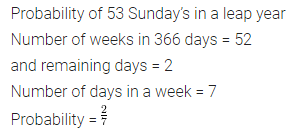ML Aggarwal Class 7 Solutions Chapter 17 Data Handling Objective Type Questions for ICSE Understanding Mathematics acts as the best resource during your learning and helps you score well in your exams.
ML Aggarwal Class 7 Solutions for ICSE Maths Chapter 17 Data Handling Objective Type Questions
Mental Maths
Question 1.
Fill in the blanks:
(i) The number of times a particular observation occurs in a data is called ………. of that observation.
(ii) The frequency of 9 is written symbolically as ………. using tally marks.
(iii) In a bar graph, the height (or length) of a bar is equal to or proportional to the frequency of the ……….
(iv) Double bar graphs help us in comparing two ……….. at a glance.
(v) The most common representative value of a statistical data is the ……….. of the data.
(vi) Mode of a data is the observation which occurs …………. number of times in the given data.
(vii) The arithmetic mean of first 10 natural numbers is ……….
(viii) When a die is rolled, the probability of getting a number more than 5 is ………..
(ix) The probability of an ……….. event is 0.
(x) The probability of a ………… event is 1.
(xi) Median is one of the observations is the data if the number of observations is ………..
Solution:
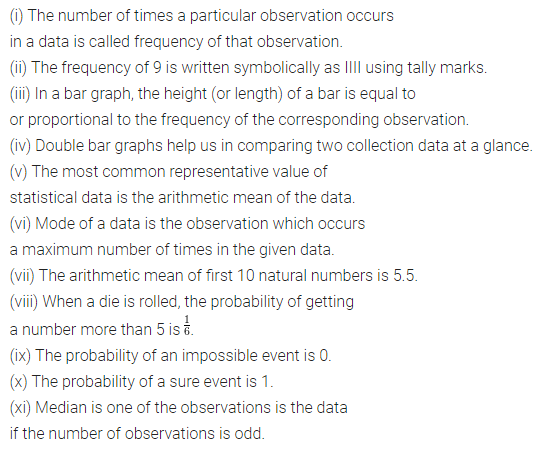
Question 2.
State whether the following statements are true (T) or false (F):
(i) Mean is the value of observation that occurs most frequently.
(ii) The range of the data -3, 4, -5, 1, -2, 0 is -9.
(iii) Mode is always one of the numbers in a data.
(iv) There is only one mode for a given data.
(v) Mean is always one of the numbers in a data.
(vi) The data 6, 4, 3, 8,9, 12, 13, 9 has mean 9.
(vii) Median of the data may or may not be from given given data.
(viii) The measures of central tendency may not lie between the maximum and minimum value of data.
(ix) If the extreme observations on both ends of a data arranged in ascending order are removed, then the median gets affected.
(x) The probability of getting an ace out of a deck of playing cards can be greater than 1.
(xi) Median of 4, 5, 9, 2, 6, 8, 7 is 2.
Solution:
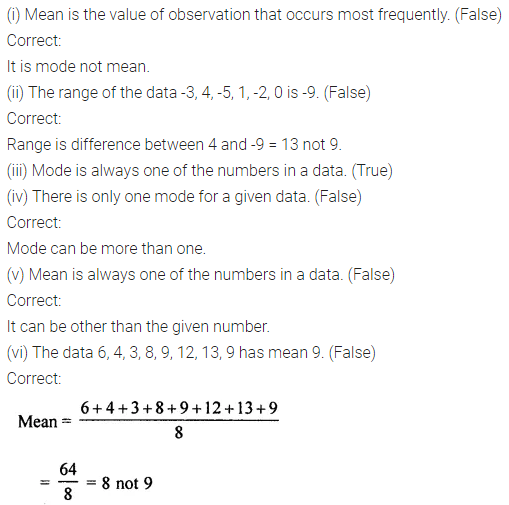
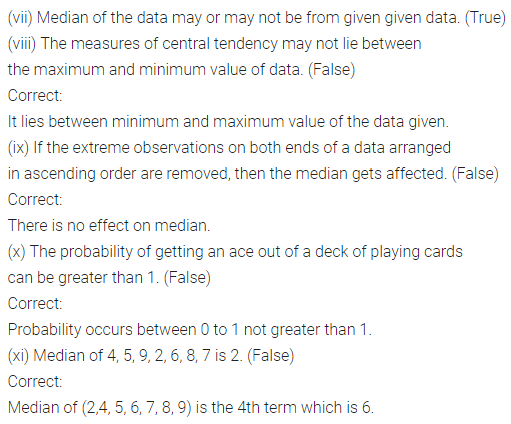
Multiple Choice Questions
Choose the correct answer from the given four options (3 to 18):
Question 3.
Which of the following is not a central tendency of a data?
(a) Mean
(b) Median
(c) Mode
(d) Range
Solution:
![]()
Question 4.
The difference between the highest and the lowest observations in a data is its
(a) frequency
(b) width
(c) range
(d) mode
Solution:

Question 5.
A cricketer scored 38, 79, 25, 52, 0, 8, 100 runs in seven innings. The range of the runs scored is
(a) 100
(b) 92
(c) 52
(d) 38
Solution:

Question 6.
If the mean of 3, 1, 5, x and 9 is 4, then the value of x is
(a) 6
(b) 4
(c) 2
(d) 0
Solution:
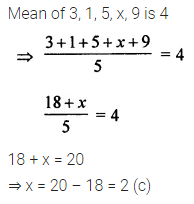
Question 7.
The number of goals scored by a football team in a series of matches are: 3, 5, 0, 1, 2, 0, 4, 1, 3. The median of this data is
(a) 3
(b) 2
(c) 2.5
(d) 1
Solution:
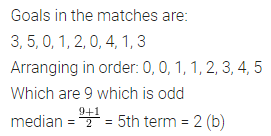
Question 8.
The median of the first 49 natural numbers is
(a) 24
(b) 25
(c) 25.5
(d) 26
Solution:

Question 9.
The mean of three different natural numbers is 40. If lowest is 19, what could be highest possible number of remaining two numbers?
(a) 40
(b) 71
(c) 81
(d) 100
Solution:
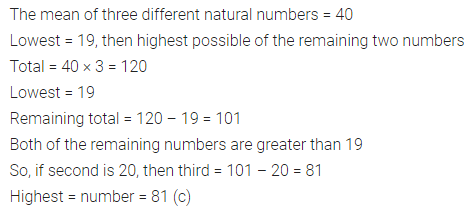
Question 10.
The mode of the data:
3, 5, 1, 2, 0, 2, 3, 5, 0, 2, 1, 6 is
(a) 6
(b) 3
(c) 2
(d) 1
Solution:

Question 11.
The probability of a sure event is
(a) 0
(b) \(\frac { 1 }{ 4 }\)
(c) \(\frac { 1 }{ 2 }\)
(d) 1
Solution:
![]()
Question 12.
The probability of an impossible event is
(a) -1
(b) 0
(c) \(\frac { 1 }{ 2 }\)
(d) 1
Solution:
![]()
Question 13.
The probability of a newly born baby to be a girl is
(a) 0
(b) \(\frac { 1 }{ 4 }\)
(c) \(\frac { 1 }{ 2 }\)
(d) 1
Solution:
![]()
Question 14.
The probability of selecting letter G from the word GIRL is
(a) 1
(b) \(\frac { 1 }{ 2 }\)
(c) \(\frac { 1 }{ 4 }\)
(d) \(\frac { 1 }{ 3 }\)
Solution:
![]()
Question 15.
The probability of selecting a vowel from the word ALPHABET is
(a) \(\frac { 1 }{ 2 }\)
(b) \(\frac { 1 }{ 7 }\)
(c) \(\frac { 2 }{ 7 }\)
(d) \(\frac { 3 }{ 8 }\)
Solution:

Question 16.
When a die is thrown, the probability of getting a composite number is
(a) \(\frac { 1 }{ 2 }\)
(b) \(\frac { 1 }{ 3 }\)
(c) \(\frac { 1 }{ 4 }\)
(d) \(\frac { 2 }{ 3 }\)
Solution:

Question 17.
A bag contains 5 white balls and 10 black balls. The probability of drawing a white ball from the bag is
(a) \(\frac { 5 }{ 10 }\)
(b) \(\frac { 5 }{ 15 }\)
(c) \(\frac { 10 }{ 15 }\)
(d) 1
Solution:

Question 18.
In a school, only 2 out of 5 students can participate in a quiz. What is the probability that a student picked at random makes it to the competition?
(a) 50%
(b) 40%
(b) 30%
(d) 20%
Solution:

Value Based Questions
Question 1.
The following table shows the time (in hours) spent by a student of class VII in a day:

Draw a bar graph to represent the above data. Is it correct to watch T.V. for 3 hours and studying just 2 hours daily?
Solution:
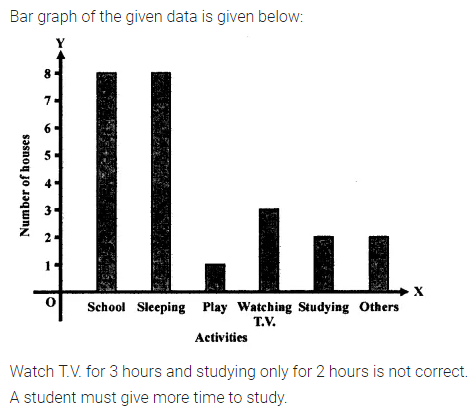
Question 2.
In a game, a fair coin is tossed. A person is paid ₹ 5 if he gets head and he pays ₹ 2 if he gets tail. Find the probability of winning ₹ 5. Is gambling a good way of earning money?
Solution:
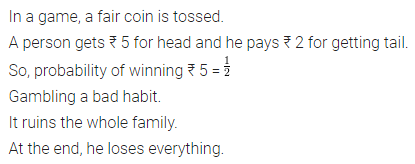
Higher Order Thinking Skills (HOTS)
Question 1.
The mean of 6 observations is 17.5. If five of them are 14, 9, 23, 25 and 10, find the sixth observation.
Solution:

Question 2.
The mean height of 10 students is 151.8 cm. Two more students of heights 157.6 cm and 154.4 cm join the group. What is the new mean height?
Solution:
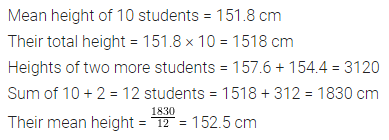
Question 3.
The following observations have been arranged in ascending order. If the median of the data is 13, find the value of x:
3, 6, 7, 10, x, x + 4, 19, 20, 25, 28
Solution:
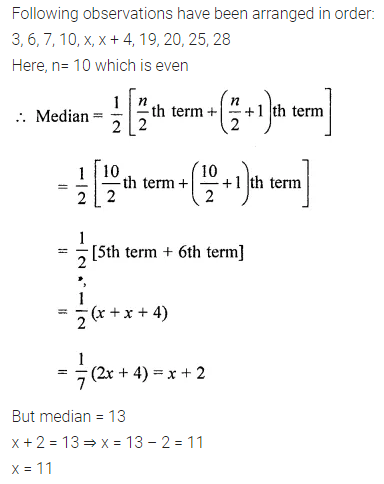
Question 4.
If the mean of the data (given below) is 4.5, then find the median of the data:
5, 7, 7, 8, x, 3, 1, 5, 4, 2
Solution:
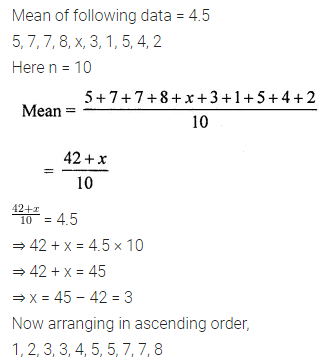
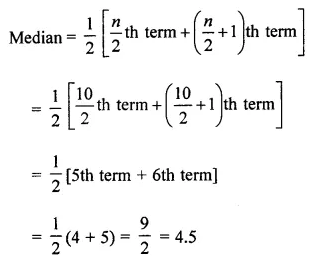
Question 5.
Find the probability of getting 53 Sunday’s in a leap year.
Solution:
